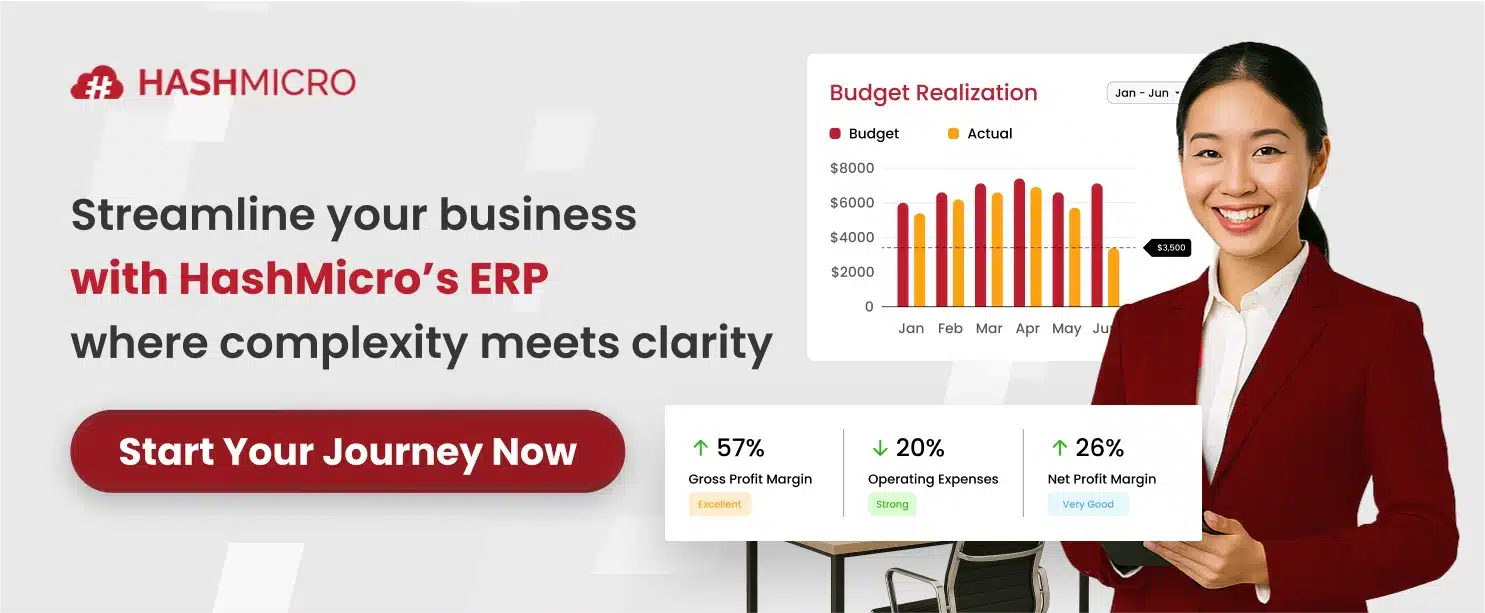In recent years, the amount of data generated by businesses has skyrocketed, creating an urgent need for reliable database systems with Oracle System. Companies rely on databases to store a wide range of information, including customer data, financial records, inventory, and more.
Databases are essential tools for managing and analyzing data efficiently, helping companies make informed decisions, improve operations, and stay competitive. This is where Oracle comes in.
Among the various database management systems available, the HashMicro oracle system has emerged as one of the most popular ones in use today. A relational database management system (RDBMS) allows businesses to store, organize, and manage data.
Key Takeaways
|
Table of Content:
Table of Content
What is the Oracle System?
The Oracle system is a relational database management system designed to handle large amounts of data created by Oracle Corporation. It is known for its ability to manage multiple users, its advanced security features, and its scalability.
This system offers businesses and organizations an efficient and reliable way to manage their data. Oracle’s database, like most RDBMSs, uses the standard SQL (Structured Query Language) programming language to create database structures, manage records, perform actions, or retrieve existing data.
Oracle System’s Features
The Oracle system is an all-encompassing solution for data management, visualization, access control, and user management. Below is the key features of Oracle system:
- Finance and accounting tools
- Billing management
- Accounting standards compliance
- Financial planning and projections
- International tools
Oracle System’s Pros
According to Business News Daily, Oracle system integrates various departments and their operations—from finance and sales to customer service and inventory management—into a single, cohesive system that operates in real time. This integration ensures that every team member, regardless of their department, has access to the same up-to-date information.
Some of the best ERP software utilize better synchronization as a crucial feature for maintaining operational continuity, enhancing decision-making, and improving overall organizational efficiency. It reduces the risks of data silos and inconsistencies that can occur when different departments use separate systems.
Furthermore, Oracle’s global capabilities are particularly robust. The software supports over 190 currencies and accommodates a variety of exchange rates and payment options, which is essential for businesses operating in the international market.
Oracle System’s Cons
Despite its popularity, the Oracle system does have some disadvantages that companies should be aware of. Here are several drawbacks of Oracle system based on Forbes.
No Free Trial Available
One notable limitation of Oracle is the absence of a free trial option. This can be a significant disadvantage for businesses that prefer to test software before committing financially.
A free trial allows potential users to explore features, assess usability, and determine if the software meets their specific needs without risk. Without this option, companies must rely on demos and sales consultations to gauge the system’s fit, which might not provide as comprehensive an understanding or as hands-on an experience as a trial period would.
Can Be Overwhelming for New Users
The complexity of Oracle system can also lead to a steep learning curve, particularly for new users or businesses transitioning from simpler systems. The array of features and deep customization options, while beneficial in tailoring the software to precise business needs, can initially overwhelm users.
Must Schedule a Consult for Pricing
Oracle system does not provide straightforward pricing information upfront; instead, potential customers must schedule a consultation to receive a quote. This lack of transparent pricing can be frustrating for businesses trying to quickly compare ERP solutions or those with strict budget constraints.
Limited User Access on Lower-tier Plans
Oracle system’s lower-tier plans often come with restrictions on the number of users who can access the system. This limitation can be a challenge for growing businesses that might acquire a need for more user access over time.
As companies expand, they may find the need to upgrade to more expensive plans to accommodate additional users, which can lead to higher-than-anticipated costs and could affect scalability and flexibility in operations.
Oracle System Alternative: HashMicro
Knowing the disadvantages of Oracle, the system is therefore not suitable for all companies. HashMicro, an alternative to Oracle, provides similar functionalities and offers a range of business solutions, including the Hash Core ERP that caters to businesses with a complete suite of ERP tools.
This software has a wide selection of modules to streamline business processes, ranging from Supply Chain to Human Resources. However, the four main modules offered that cover essential business functions include Sales, Inventory, Accounting, and Purchasing.
Hash Core ERP helps businesses automate various processes and enhance operational efficiency. With its Business Intelligence technology, businesses can make accurate decisions based on real-time data and comprehensive reports.
It is accessible from anywhere and at any time. With one centralized system, you can manage your operations all from a single platform. This can help to reduce errors and improve efficiency, allowing businesses to focus on their core activities.
The key advantage of this software is that it is highly customizable, allowing businesses to configure the software to match their unique needs. This enables businesses to create a customized ERP system that meets their specific requirements without having to pay for unnecessary features or modules.
Additionally, HashMicro offers a range of add-ons and extensions so that businesses can customize the software further.
Conclusion
Oracle system is an advanced cloud-based solution offering users a range of features. However, it does have a few drawbacks, including its high cost and complexity. Hash Core ERP Software, on the other hand, provides comprehensive and customizable functionalities for businesses of all sizes.
It is perfect for helping businesses to streamline their operations and drive growth in a highly competitive market. With its user-friendly interface and low operating cost, Hash Core ERP is a great choice for businesses looking for a reliable and cost-effective alternative to Oracle. Give it a try with a free demo now.
























































